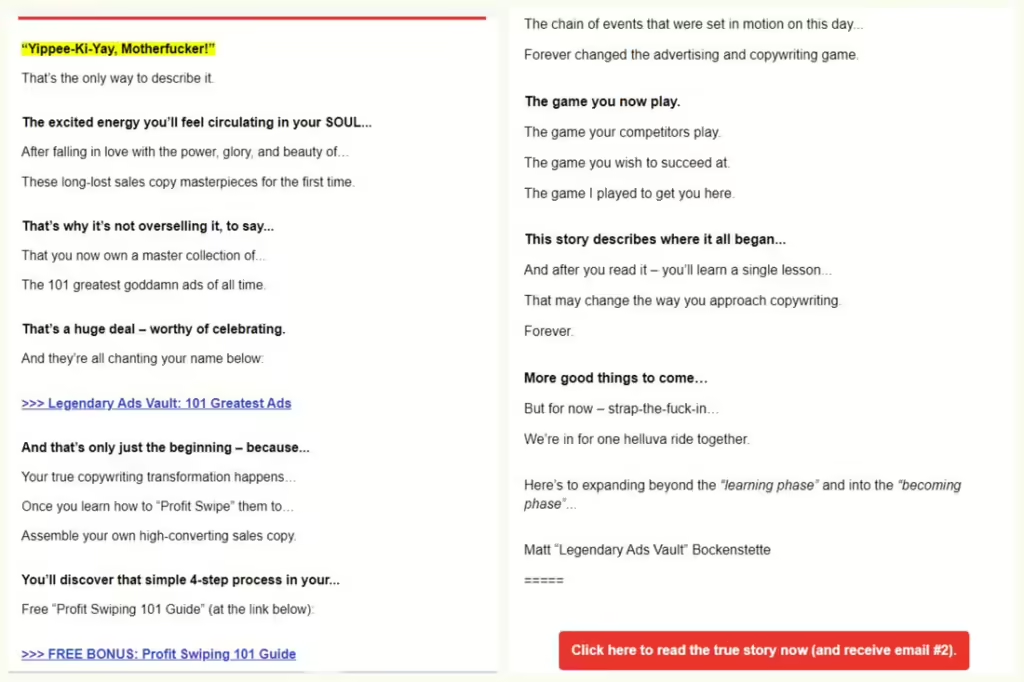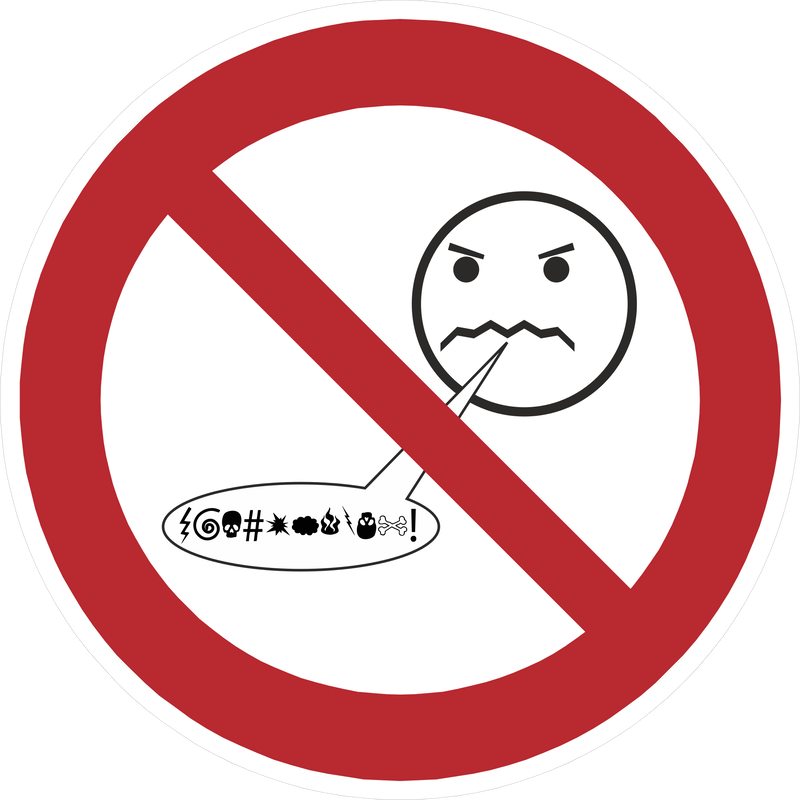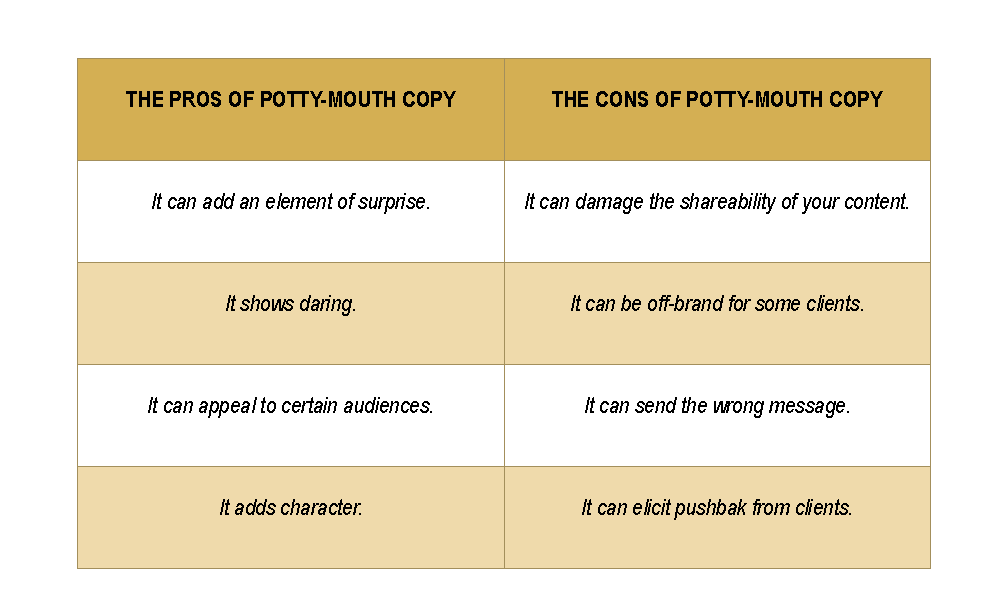It’s not your imagination. Brands swear a lot more frequently in their copy these days. It’s not a stretch to suggest that potty-moth copy is making a comeback. It used to be taboo, except for the occasional well-placed damn. Writers would not have thought about ever including the gasp-inducing f-word in their sales copy at one time. Now? Everybody and their mothers use impolite colloquialisms as if they’re the only words in the English language.
Earlier today, I came across a New York marketing and public relations agency using the tagline: “We’re Responsive AF” in big, bold letters in its hero statement. Uh, OK. Can I say the AF part didn’t compel me to click on their Contact Us link to ask for more information?
I wish I could tell you this was a one-off but it’s not. I have sadly experienced quite a bit of this kind of boldness in copy lately, from sales ads and email pitches to hero statements on websites.
I would be lying if I said this impressed me. It doesn’t. The few times I’ve gotten an email in my inbox with an expletive in the subject line, it’s gone directly to the trash. This is one of them (see below).

Maybe I’m showing my age by objecting to this “edginess” in advertising. Or maybe, I believe tossing out every cuss word you know is not the best way to be bold in your copy.
The psychology of swearing
There’s no doubt about it. Swearing elicits some strong reactions in some people. Whether you applaud it or cringe every time someone uses it, research has some interesting things to say about the psychology behind curse words. Some evidence points to swearing as a sign of intelligence. Some suggest it’s a great way to relieve pain and stress.
Why do profane words upset some of us and make others of us giggle out loud? Profanity has a direct line to our emotional sides. If you grew up in a household where swearing got your mouth washed out with soap, that negative connotation likely has stuck with you throughout the years. On the flip side, living with people who swore loudly and proudly provided a sense of normalcy in using words others consider taboo.
As with many other words in the English language, intent plays a large part in whether a swear word is perceived as offensive. Some profanities could be interpreted as discriminatory or sexually harassing. Brands do not want to cross that line in their quest to sound bold or edgy.
Bold…. or just plain crass?
Before determining whether swearing in copy is offensive, we must ask ourselves what communication goals cursing achieves. Are we trying to be funny? To fit in with the crowd (or target audience, as it were)? Display physical aggression or manage stress?
According to Routledge and CRC Press – a leading publisher of knowledge-based materials – there are four main reasons why people swear.
- The expletive function. Curse words are uttered in intensely emotional situations to express anger, fear, or frustration.
- The abusive function. Using swear words helps add insult to injury by deliberately name-calling or slighting another person.
- The social function. Swearing in a social setting is the most common use of profanity to display solidarity with other like-minded individuals.
- The stylistic function. Using expletives to express disapproval, exasperation, or surprise can be quite effective, which may be why some copywriters choose this approach. It’s a risk, however, if the target audience does not share the writer’s belief that the words are necessary to convey the message.

Brand swearing is all about the target audience
A recent discussion in one of my copywriting groups addressed this issue. Most older and more seasoned writing veterans said they were not fond of using profanity in their copy and would avoid clients who wanted it. Most of the younger writers fresh on the scene thought it was no big deal to toss about vulgar verbiage in everything they crafted.
One of the most popular arguments for doing so was that it appealed to millennials. Millennials prefer online communications that show emotion. Plenty of marketing research backs this up. They also respond to authentic and honest branding.
Does that automatically mean cursing in copy is cool with them? At least one body of research calls that theory into doubt. Including profanity in “shockvertising” may not achieve the desired effect. Non-swearword versions of the same ads that used expletives led to better recall among millennials.
You’re better off using humor in your copy because consumers of all ages love a good laugh.
Pros vs. cons of potty-mouth copy
To swear (in your copy), or not to swear? That is the question of the hour. Here is a handy guide to the pros and cons of each side of the argument to help you decide.

Euphemisms can be a better alternative to outright swearing in your copy. We can all probably think of some examples of this that we’ve seen. One that immediately comes to mind is Fuddruckers. The folks who branded this company knew exactly what they were doing. Other examples of linguistic creativity in names and marketing copy include one of my all-time favorites, “Shut the front door.”
A final WTF on brand swears in copy
I know how I feel about brands swearing in their copy. However, I’m not going to push my methods on others. I’ll simply offer a final word of advice on how to approach cursing in your writing. If you choose to use cussing in your copy, there should always be a purpose behind the shock value. If you use profanity just because you can, it can dash any hopes of sounding edgy.
Whatever language you ultimately choose for your copy, make sure it reaches your target market with messaging that appeals to their demographic.
Happy wordsmithing!


I’ve been following your blog for quite some time now, and I’m continually impressed by the quality of your content. Your ability to blend information with entertainment is truly commendable.